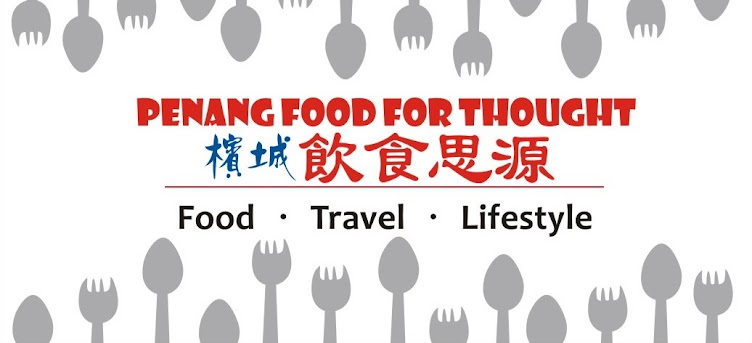Speaking of KL-style Hokkien Mee, one of the undisputed top guns is Kim Lian Kee (金莲记). This brand traces its roots to 1927 when Mr. Ong Kim Lian, a Chinese immigrant from Fujian Province (福建省) pioneered this recipe to the familiar form today. The original stall at Dang Wangi no long exists, but the current flagship outlet at Petaling Street (茨厂街) continues to draw hungry diners far and wide. The descendants of Mr. Ong have inherited the recipe and expanded the business through several outlets in the Klang Valley.
There is a Kim Lian Kee outlet at Sunway Pyramid. Per the original recipe, the stir-frying is done over charcoal instead of cooking gas, as the late founder insists that the former gives more distinctive "wok hei" (镬气) to the Hokkien Mee. To demonstrate that the tradition remains authentic, the wok stations at this outlet are visible from the dining section through glass windows (otherwise the place will be very smoky).
It is a sin to patronize this restaurant without an order of the signature Hokkien Mee (福建面, RM9.50). Sizzling hot from the wok and served over banana leaf, the lardy aroma preludes the gratifying taste that we are about to experience.
The thick yellow noodles are coated with a secret concoction of corn flour, soy sauce, oyster sauce and garlic. The noodles are accompanied with Chinese cabbage, pork pieces and pork lard (猪油渣). Yes, greasy pork lard which your physician warned you about! If you are concerned with your fat intake, you shouldn't even be reading thus far.
The result is a fantastic meld of porky essence and mouth-watering gravy that puts other dishes to shame. The noodles are springy when picked by chopsticks. The pork pieces and pork lard are just begging to be consumed. We wasted no time in clearing the entire plate to the very last bit.
Another dish worth trying is the Cantonese Yin Yong (广府鸳鸯炒, RM9.50). The Yin Yong (鸳鸯) refers to the fact that two types of noodles are used: flat rice noodles (粿条) and rice vermicelli (米粉). Although pale in comparison to the Hokkien Style Mee, this dish is still quite delightful as Kim Lian Kee's "wok hei" technique also applies to this Cantonese dish.
Moving on to Loh Mee (卤面, RM9.50), the same thick yellow noodles is used. Unlike the thick black gravy that Penangites are familiar with, this is the KL-style (more specifically Ulu Yam-style) Hokkien Mee uses yellowish soya gravy. Some vinegar is typically poured in to give an appetizing sourish flavor. However, I still prefer the original Ulu Yam's cooking, where visitors to/from Genting Highlands are willing to take a short detour to this otherwise-uninteresting former New Village.
Last but not least, the Claypot Loh Shu Fan (瓦煲老鼠粉, RM10.90) dish is cooked and served using a claypot. The rice noodle is called loh shu fan (老鼠粉) or "rat tail noodle" due to its resemblance to the tail of a rodent. The gravy is made of soy sauce and oyster sauce, similar in composition to Hokkien Mee but more diluted and less rich in flavor. A semi-cooked egg is dropped into the gravy just before serving, thus giving an impression of moonlight (月光). When stirred, the egg serves to corrugate the gravy to make it thicker and richer in flavor.
The meal is very satisfying, at least regarding the Hokkien Mee. The other dishes are commendable to certain degree, but I still feel that Hokkien Mee is Kim Lian Kee's strength. If you do visit and only have stomach to try one dish, the choice becomes very obvious.









No comments:
Post a Comment